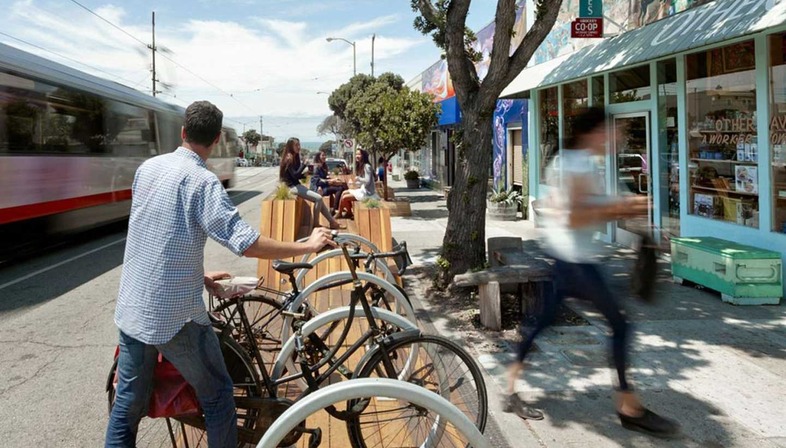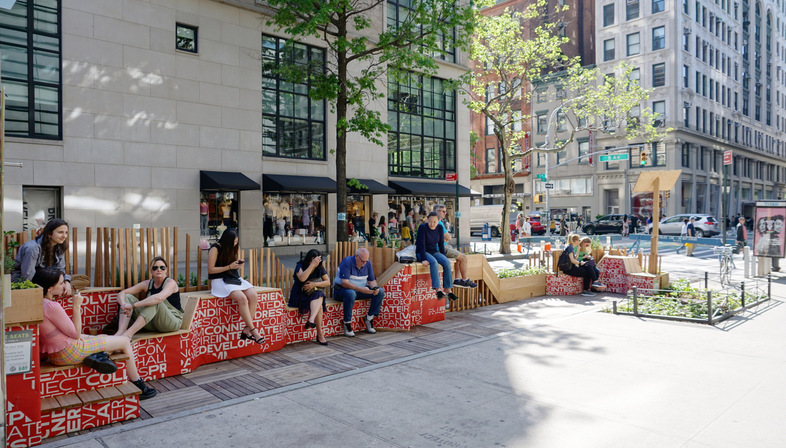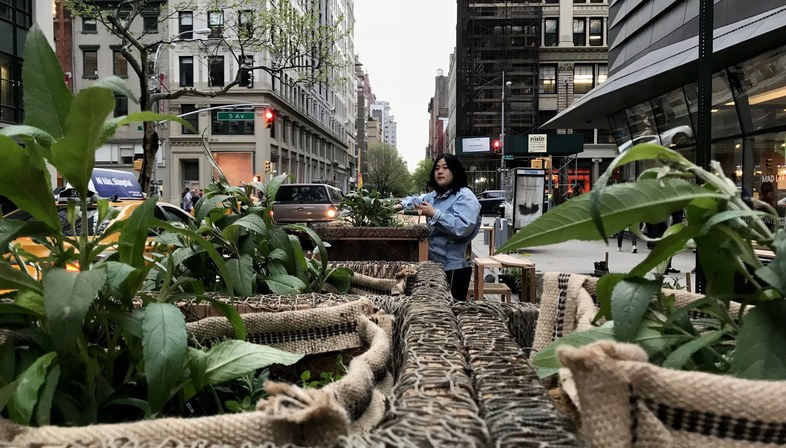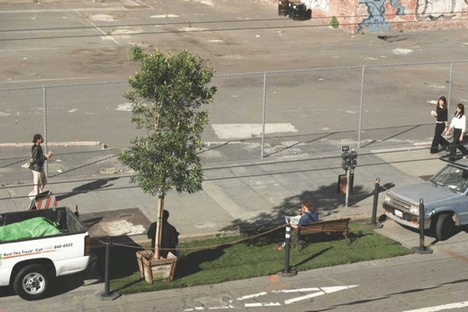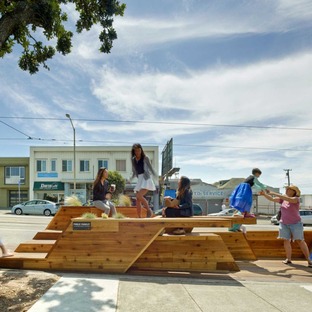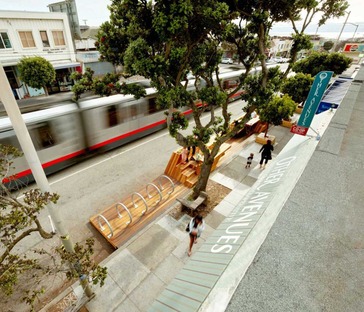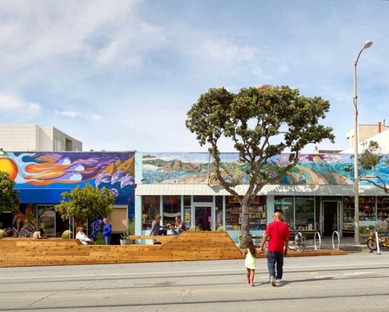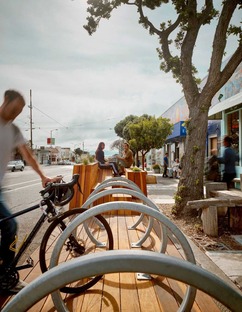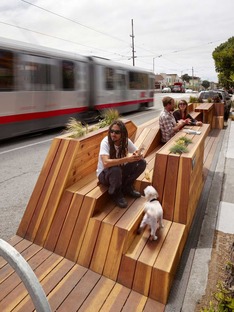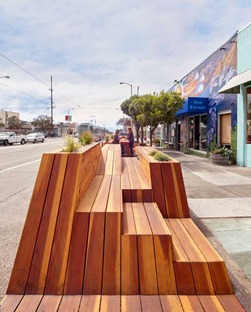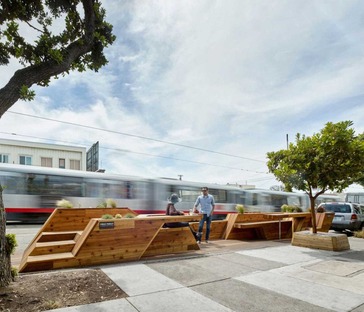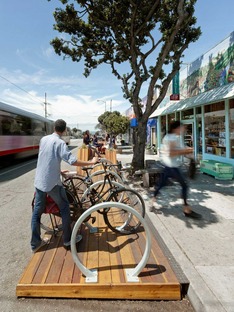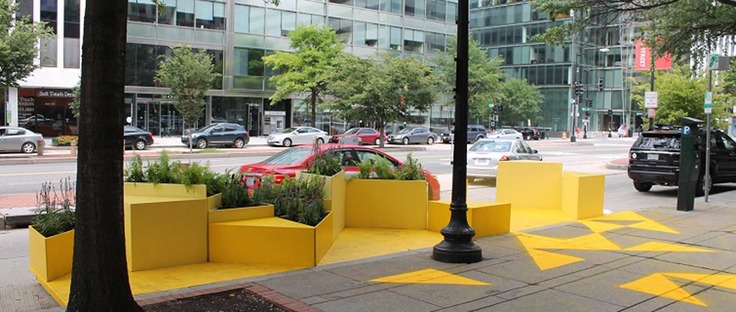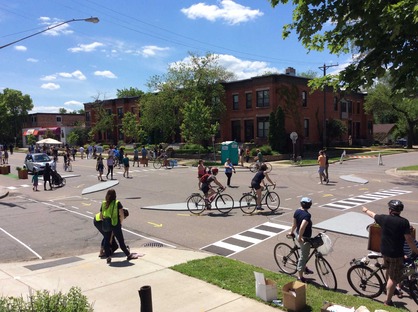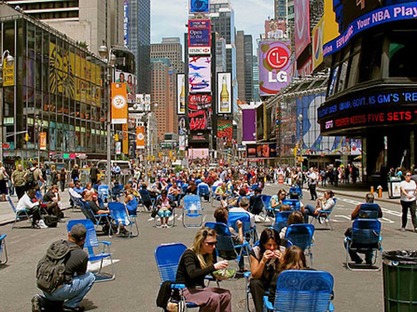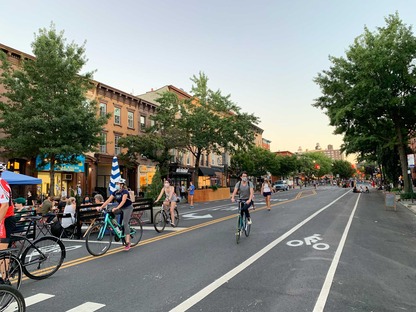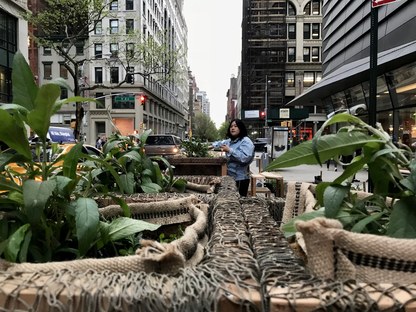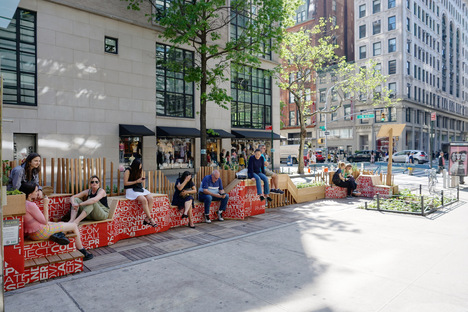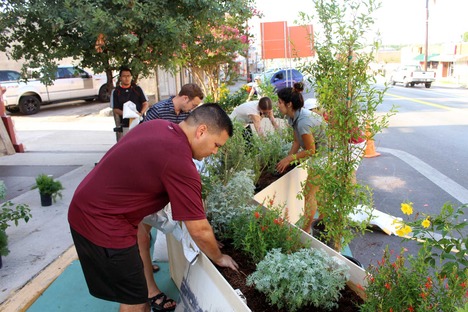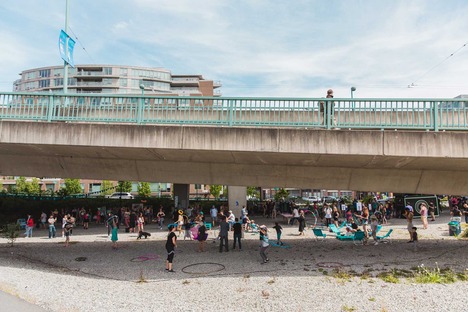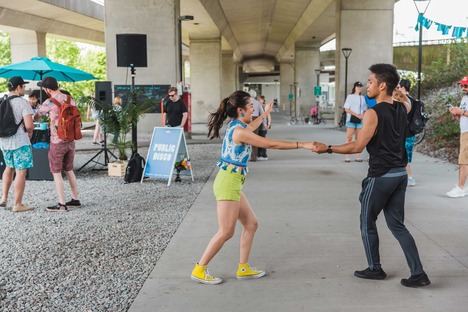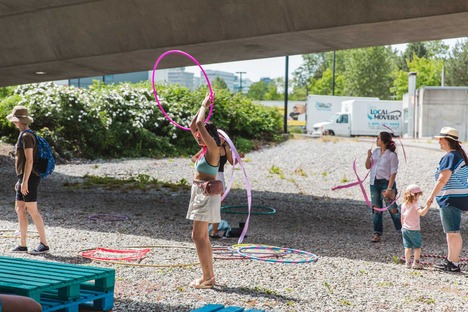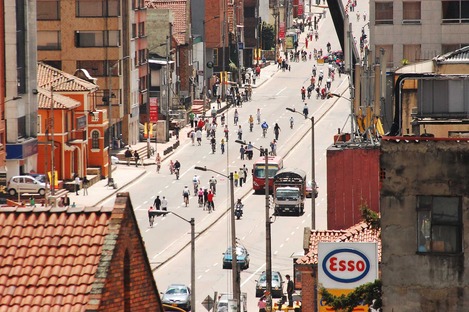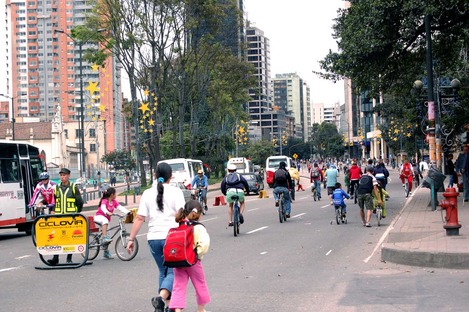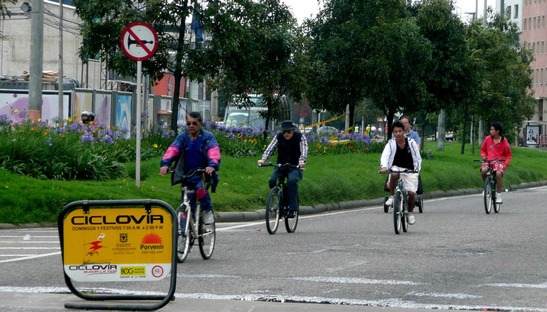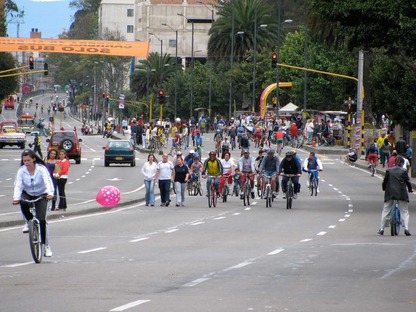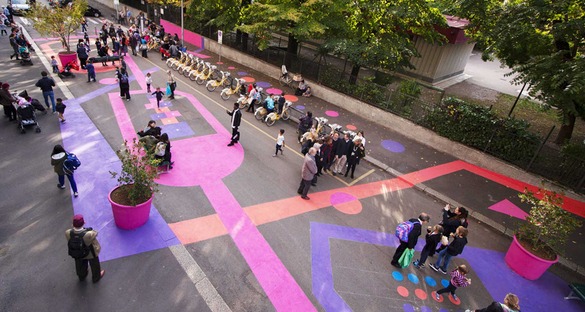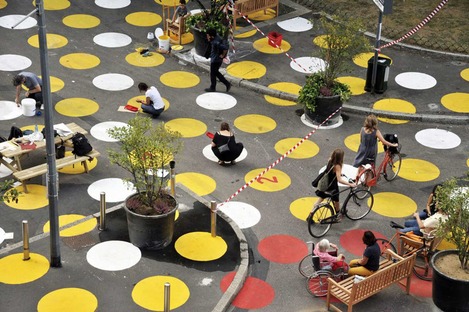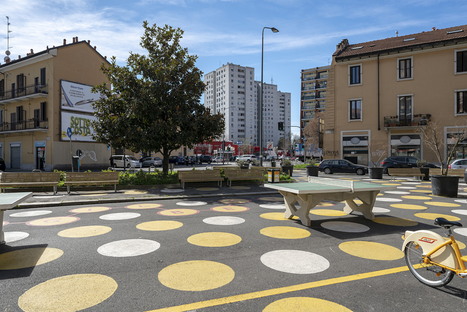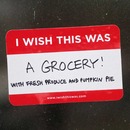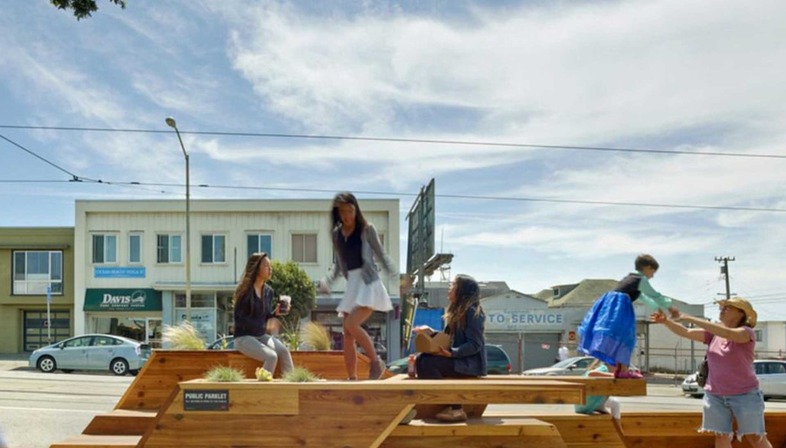
Paused...
In his book 'The Practice of Everyday Life' de Certeau dedicates a space to urban planning. That blank page, in which is schematically condensed and represented by experts in cooperation with governments and institutional bodies a mapping that "makes the complexity of the city readable, and fixes its opaque mobility in a clear text” responds to the regulations of an abstract planning, independent from the "semantic layers" that make the vocabulary of an authentic reading. This authority of the city determined by a top-down process generates unexpected appropriations, " clever tricks, ‘hunter's cunning,’ maneuvers, polymorphic simulations, joyful discoveries, poetic as well as warlike” and in 2015 the urban planner, Mike Lydon in collaboration with a fellow planner Anthony Garcia, will publish "Tactical Urbanism: Short-term Action for Long-term Change", a book about these micro-interventions, defined by some as 'homemade', capable to provoke concrete urban improvements.
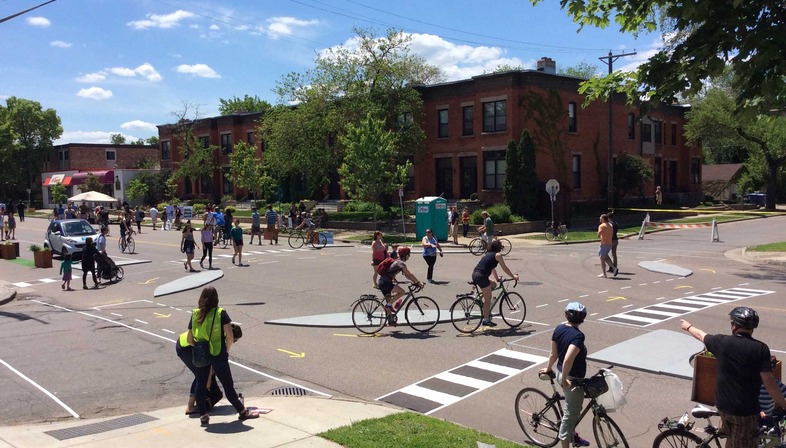
Problematic situations, voids and ‘dormant’ spaces, dysfunctionalities, as effect of the slowness of certain bureaucratic procedures, are the main reasons that cause this kind of approaches in their various forms, temporary, improvisational, guerrilla, unsolicited, tactical, informal, DIY, pop-up, unplanned, participatory, micro, open-source, characterized by a provisional nature, a limited cost and scale and the active involvement of local actors. Efforts that, making use of compelling strategies, implement tactics different from a conventional practice, capable of triggering, beyond their provisional appearance, a series of positive effects, raising attention or awareness of the administrative institutions on 'opaque' moments, making cities more sustainable, accessible and inclusive. They are small ideas that, by taking consistency from a particular interest towards a familiar living environment, animated by the desire to improve it, arrive to fill gaps and provoke important transformations.
The examples of spontaneous actions that can be considered part of this movement, happening for a common interest, are truly many and can appeal to the most varied urban 'cracks': moments of decay, danger, contingencies resulting from rushed and insensitive developments, cause of discomfort and marginalization. Cities are eternal works in progress, someone said, and these rectification acts emerge in ways and trends that surprise us with their simplicity and originality, as a decade ago happened with a guerilla project in Raleigh, a small town in North Carolina. During a winter night with the complicity of two friends, the help of the darkness and rain, an urban planning graduated student, Matt Tomasulo, posted about thirty weatherproof signs, with directional arrows, indicating the “minutes by foot” to reach the destinations and QR code. The initiative aimed to promote a healthier life and improve walkability, highlighting and modifying an erroneous, widespread perception, emerged from a survey, which discouraged almost all people from moving from one point to another, because in their mind too far. This modest unauthorized campaign unexpectedly received a very high level of civic participation, becoming a pilot program. "Walk Raleigh" will provoke emulation and interest from many other countries.
In addition to the street, there is also the sidewalk that should offer spaces and services as a help to stop and spend moments of relaxation and pleasure.
In 2005, along a drab street, lacking any green areas, in downtown San Francisco, a tiny do-it-yourself park was conceived by Rebar, an art and design studio. With a 200 square foot grass carpet, a bench and a potted tree they covered a concrete parking lot, paying for a two-hour ticket. The installation had a clear symbolic value: the smallness of the green dot, highlighted by the vastness of the surrounding area, entirely dedicated to parking or circulation of cars, explicitly denounced how little public space the city reserved for social activities, health and enjoyment of its citizen. During the two hours legitimized by the paid receipt, the group noticed that several people used the "garden", sitting on the bench in the shade of the tree. They took some photos and published them on their web, sparking a wide interest and a real debate on the lack of urban public green. 'Parklet' evolved into an international event, a global, participatory art project launched by Rebar studio, which invites artists, activists, ordinary citizens from all over the world every year, on the third Friday of September, to convert and temporarily reprogram vehicle parking areas into small parks, places for art and play, activism and social exchange.
The message launched by the students in Paris in 1968 in favour of an authentic participatory democracy, “Elections don’t mean nothing—Vote where the power is—Our power is in the street”, underlines an element that has been and remains one of the stages with the greatest impact potential for subversive actions, promoted by desire for change. And speaking about this element, the street, it seems appropriate to mention a woman who, amid consensus but also strong controversies, has worked hard to implement a more 'slowed down' type of life and encourage community relations in a large metropolis. “One of the good legacies of Robert Moses is that, because he paved so much, we’re able to reclaim it and reuse it,” says Janette Sadik-Khan, for six years, appointed transportation commissioner by New York City. This modern-day Jane Jacobs, who often cites her inspiration as a model who guided her in reinventing the road, proudly claims to have fought by recovering hundreds of acres reserved for cars, carrying out one of the most radical revitalization by creating places where people love to entertain themselves “instead of places that people wanted to park.”
From boom that in the 1950s characterized the post-war period, more and more cars populated the city streets and to this fighter, deployed in defense of an urban space shared in a more balanced way between people and sustainable means of transport, it seems that this 'last century’, doubling the road networks, has encouraged more people to drive, using a very wrong tactic to get out of congestion, comparable to those parameters that suggest to “ deal with obesity by loosening your belt”. Janette strived to find a remedy to these errors by creating nearly 400 miles of cycle paths, more than 60 pedestrian squares and reserving express bus lanes.
Starting from the belief, that "if you want to build a better city, you can start by building bike lanes”, she has made the bicycle a basic means of transport, rather than an alternative or marginal transport, not only by implementing safe cycling infrastructures but also contributing to the launch of Citi Bike, the nation's largest bike sharing system. There are many other initiatives that she has adopted to demonstrate the potential of the street, perhaps one of the most valuable resources for citizens, where "the sidewalk contacts - as Jane Jacobs has repeatedly emphasized - are the small change from which a city's wealth of public life may grow”. Thinking small, with a little imagination and the resources available will be the peculiarities that will animate many of her interventions, deliberately intended for quick appropriations, with limited means, able to test people's reactions and above all help them to imagine the changes, get used to them, understanding that "you can paint the city you want to see". This is how some of the most congested stretches of asphalt, absolute nerve centers, have been closed to motor vehicles, such as Herald Square and Times Square, suddenly dotted with umbrellas and free cafe tables or deck chairs, carrying out overnight guerrilla-style micro-operations with little more than paint cans, temporary furniture such as planters and orange traffic cones.
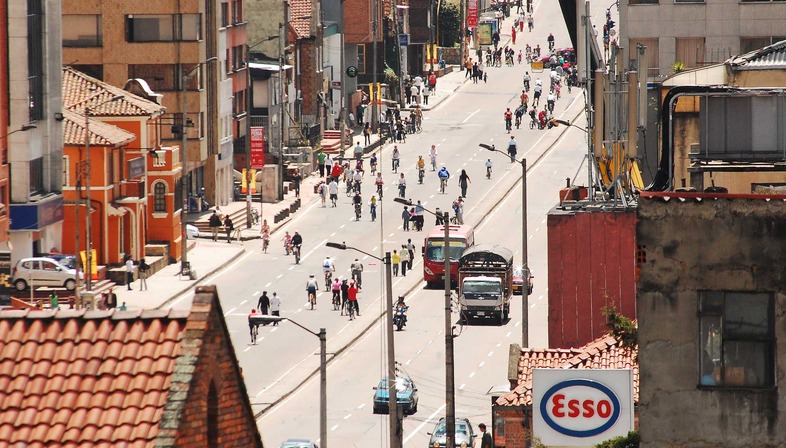
Two capitals, above all, intrigued and helped her in the attempt to give back to people what, according to her, was improperly stolen: Copenhagen and Bogotà. The latter in particular has supported an initiative that has made an urban experiment a model of admiration and emulation in the international scene.
In 1974, a group of bicycle advocates piloted a program to close the roads to cars in the Colombian capital, opening them only to cycling and leisure. This praiseworthy attempt started 'La Ciclovía', an event that, thanks to the enthusiastic support of the citizens, has become one of the most successful mass recreational events in the world. The unanimous protest against the proliferation of cars, environmental pollution and the scarcity of recreational spaces in Bogotà, saw the route be extended from 20 to 120 km, opened almost continuously over the years every Sunday and during public holidays, allowing everyone, even those who cannot benefit from a park near their home, to run, cycle, jog or walk their dog and join various recreational activities added along the street or in the adjacent green lungs, such as dance and yoga classes.
It is perhaps in the hope of making something equally magical, allowing to taste the pleasure of living New York without the car that Janette Sadik-Khan dedicated hundreds of acres of space to bicycles and pedestrians, inaugurating in 2008 the "Summer Streets", seven miles of central streets closed to the motorization for incentivizing people to use them without any danger. Her greatest success, however, is perhaps the spirit of emulation that she has been able to provoke in large and small communities that, by resorting to her pop-up techniques, have achieved permanent changes.
Virginia Cucchi
Credits:
Tactical Urbanism
Cover, Parklet 2005, Rebar Studio, San Francisco, CA, Photo Wiki/Public Domain
01-09: Parklets 2014, INTERSTICE Architect, San Francisco, CA, Photo of Cesar Rubio - courtesy of v2com / FN Archive
10, Tactical Urbanism, Pop-Up bike lane Photo/flickr Nick Falbo CC
11, Tactical Urbanism, Photo/flickr NACTO NY
12, Times Square, NY Wiki/Public Domain
13, Street Seats 2019, Parsons School of Constructed Environments, New York, Photo by Eric Feuster / FN Archive
14, Street Seats 2018, Parsons School of Constructed Environments, New York, Photo by Eric Feuster / FN Archive
15-18, Viva Vancouver, Pop Up, Rain CityBlock by Public Disco, Flickr/Photo: Alison Boulier
19, 20, 21 Cicolvia, Bogotà, Flickr/Photo Nathaa
23, 24 Apicultura Studio, Milan
25, Piazza Angilberto, Photo Matteo Cirenei / FN Archive










